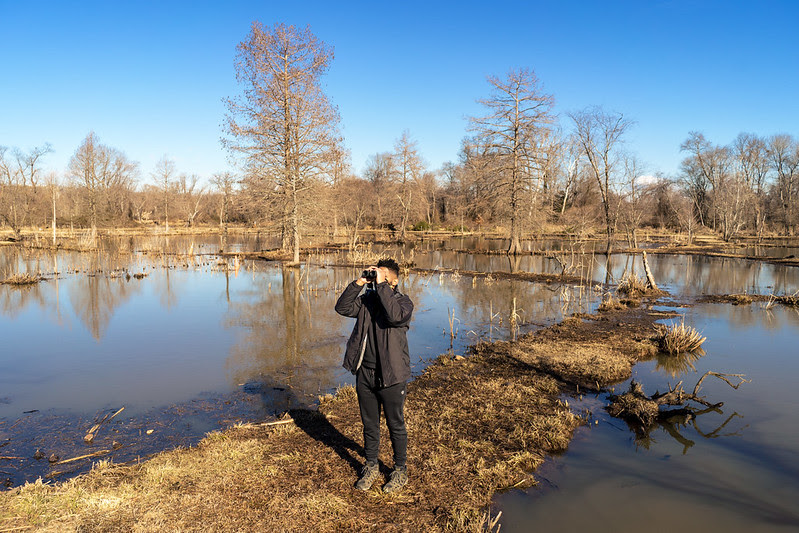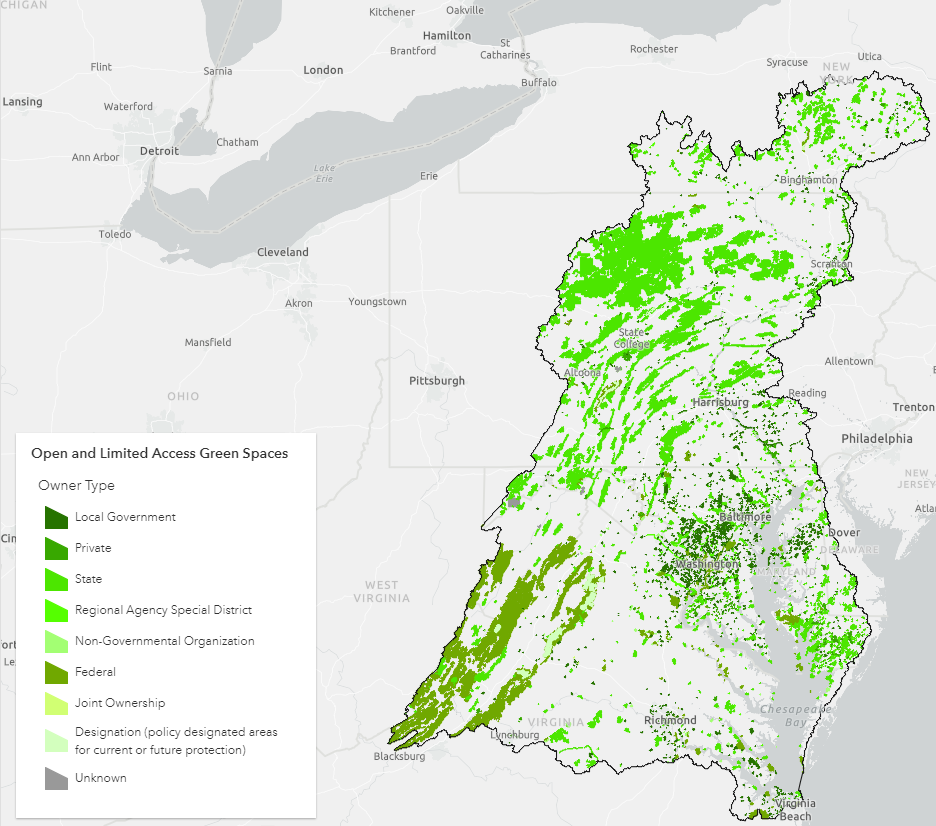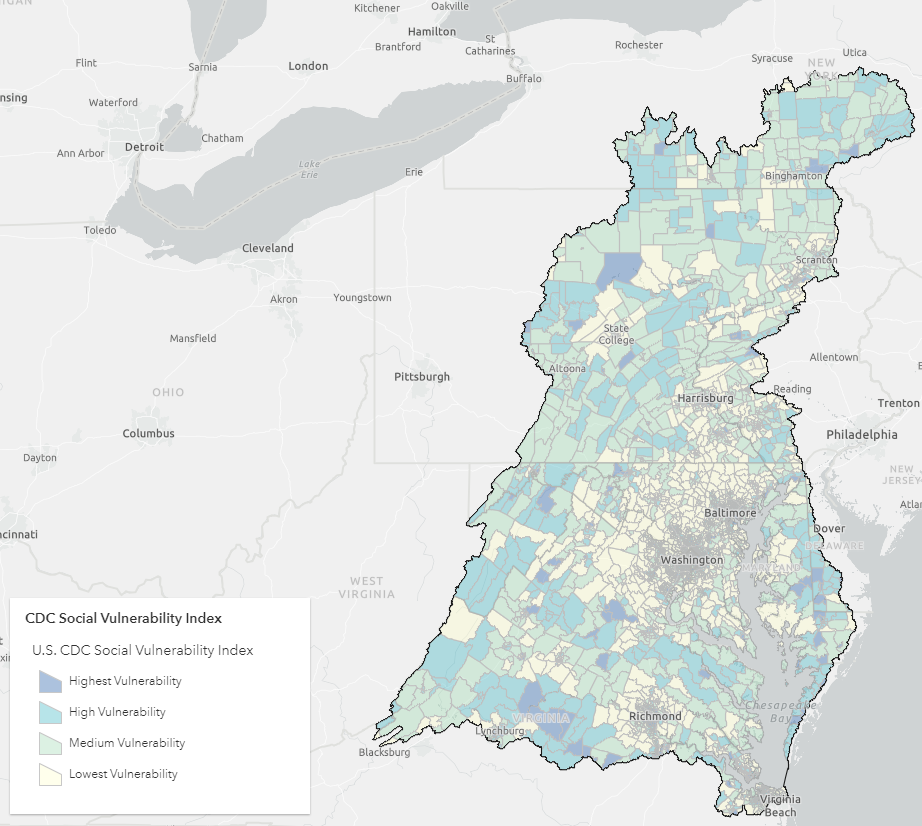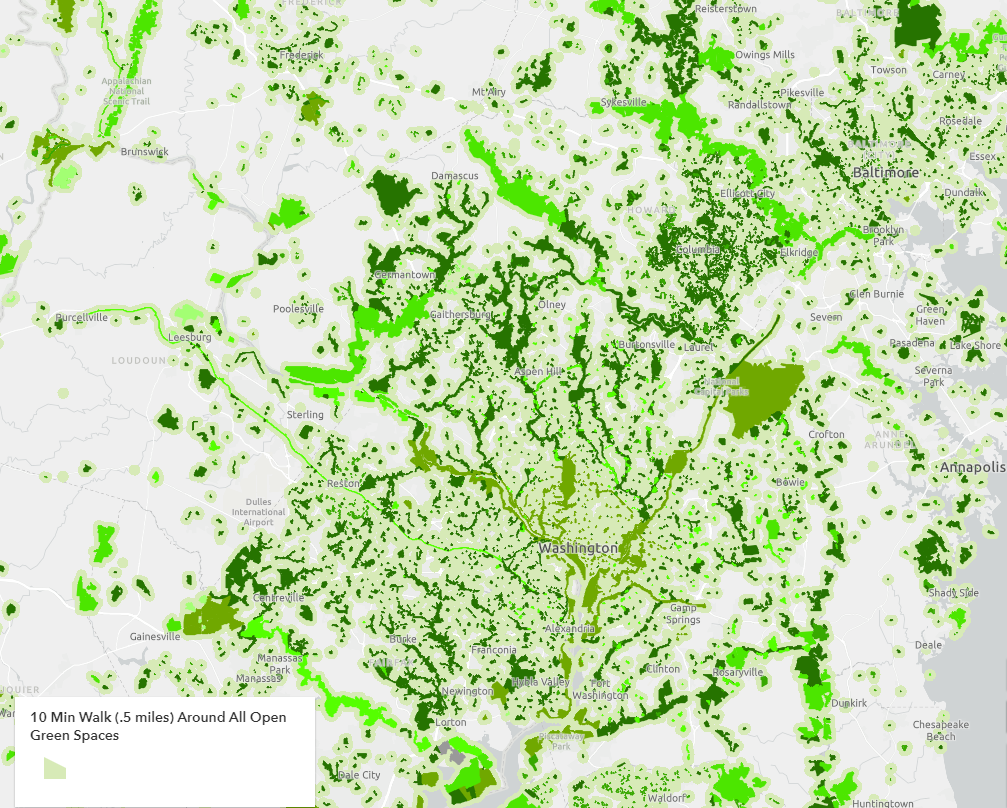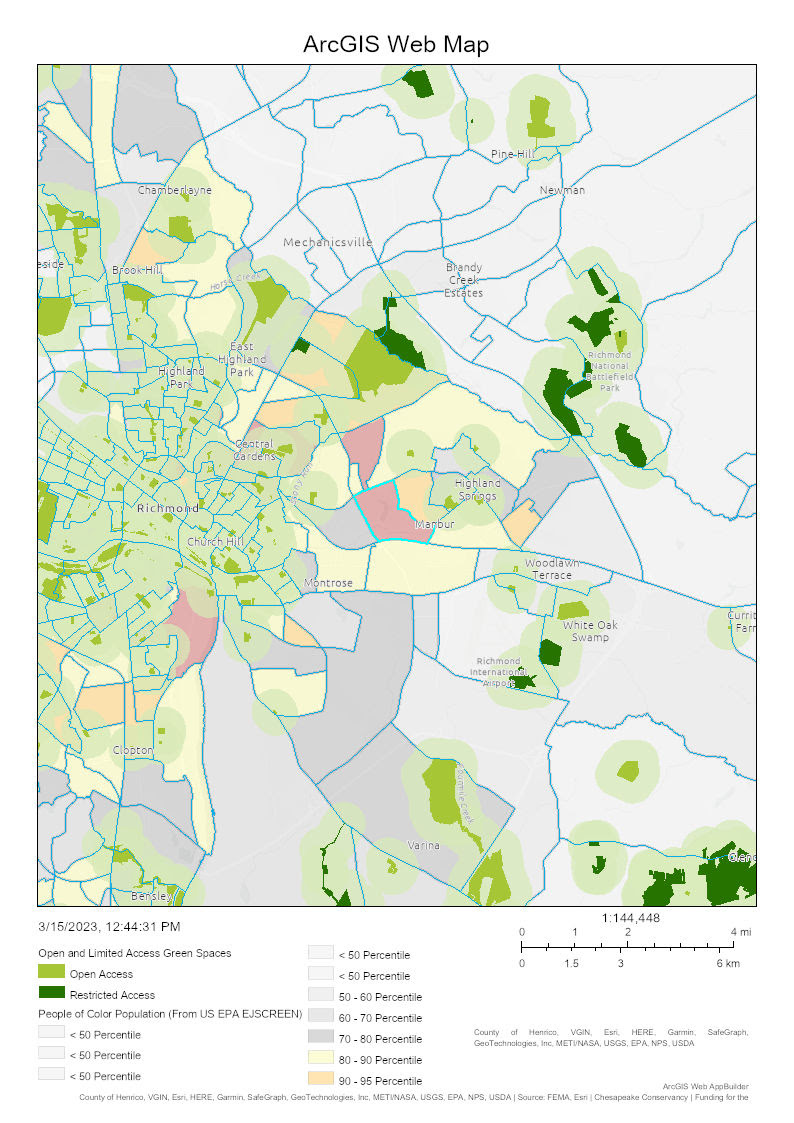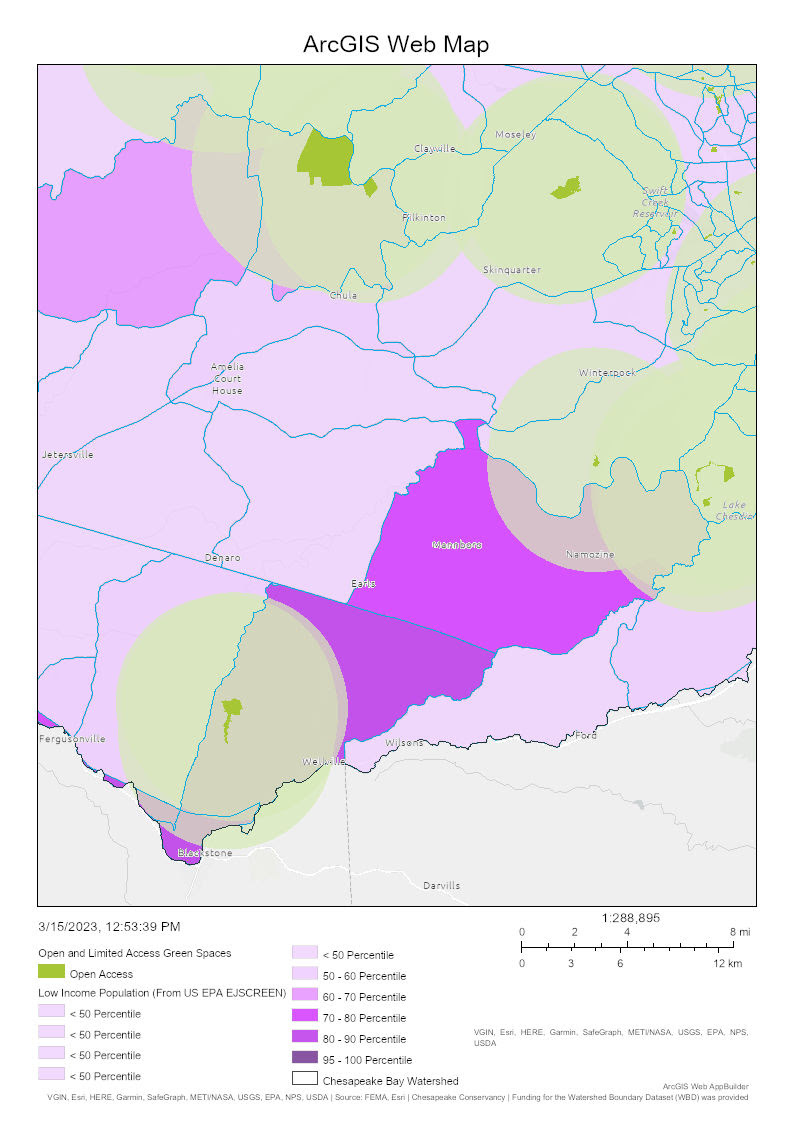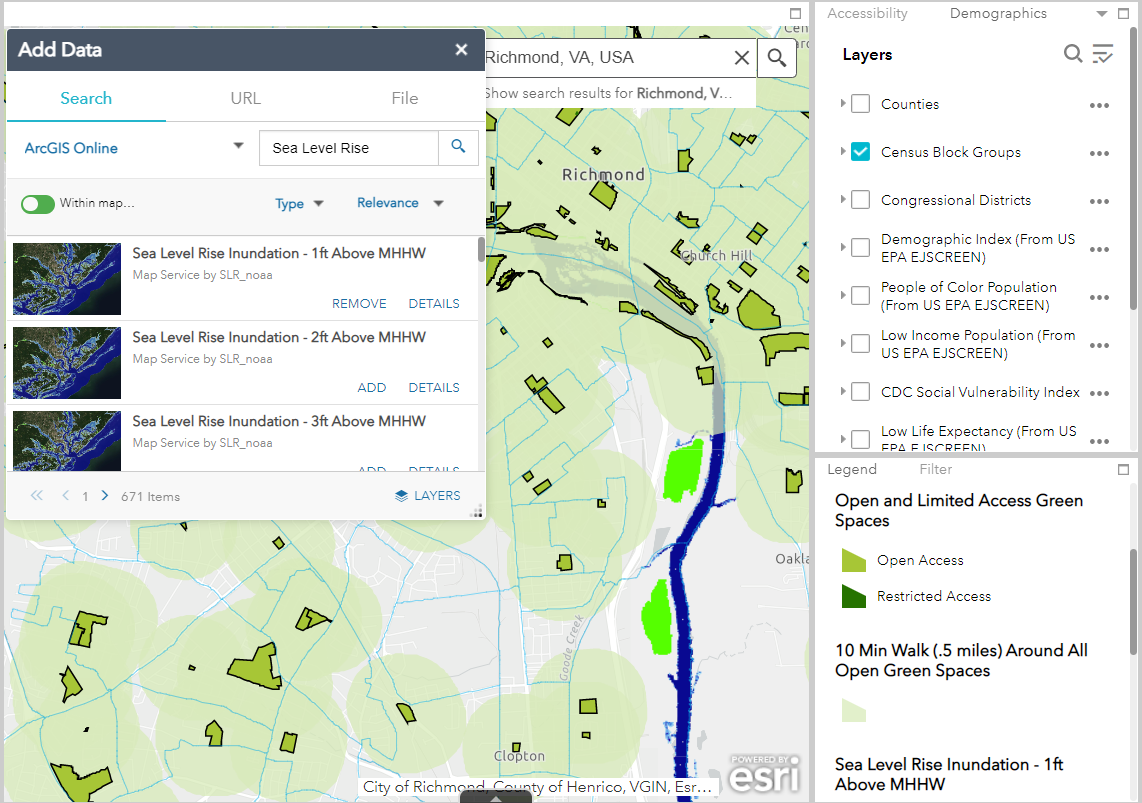Photo Credit: Nature Forward
The Covid-19 pandemic made it abundantly clear that easy access to green space is necessary for a healthy lifestyle. Public health is improved by spending time outdoors, in green spaces, including parks and trails, small vest-pocket parks, community forests and gardens – when these green spaces are reasonably accessible, welcoming and safe.
However, underrepresented, low-income communities of color are being subjected to environmental injustice impacting residents’ public health. Systemic racism has led to severe inequity around the watershed in both the amount of and ease of access to available green space. Research shows that as park visitor-ship across the watershed increased, the disparity in green space access of lower-income communities of color in the watershed became clearer. The Chesapeake Conservation Partnership (CCP) needed a new tool to analyze this disparity and begin prioritizing conservation efforts in these underserved areas.
The CCP is known for fostering collaborative action to conserve culturally and ecologically important landscapes to benefit people, economies and nature throughout the watershed. As we accelerate our rate of land conservation towards reaching 30% of the watershed protected by 2030, we want to be sure the work is done equitably as well. To further our goals and those of our partners, the CCP created the Green Space Equity Mapper to help prioritize conservation in low-income communities and communities of color with limited access to open space throughout the watershed.
This web-based map tool includes a set of interactive map layers to help conservation organizations and community groups identify areas most in need of green spaces and how these gap areas relate to demographics, community risks and land cover. The mapper addresses environmental justice through the lens of green space accessibility, responding to several goals and strategies of the Chesapeake Bay Program (CBP) and CCP:
- Protected Lands Outcome
- Vital Habitats, Water Quality, and Climate Resiliency goals
- Diversity, Equity, Inclusion and Justice Strategy
The CBP awarded a grant to consulting firm Skeo Solutions to create the Green Space Equity Mapper with the CCP. Skeo specializes in using geospatial mapping to find equitable and sustainable solutions for clients. The project started in July of 2021 with the goal of creating a tool that would be publicly available as well as accessible to those without formal GIS experience. The project team took steps to establish a set of standards and metrics, create the GIS maps based on data and established metrics and then gather insights from an advisory board and community members to refine and improve the tool. The project concluded in May of 2022. The Green Space Equity Mapper is now hosted on the CCP website for all to use.
HOW TO USE THE MAPPER:
The map layers within the Green Space Equity Mapper (GSEM) are grouped into the following three categories:
Green Spaces contains open and limited access green spaces, closed and unknown access green spaces, flood hazard areas and land cover information on tree canopy, impervious surfaces, structures, water and wetlands. Green space can also be broken down into owner type.
Demographics contains information on people of color, low-income, a combined people of color and low-income demographic index, linguistic isolation, low life expectancy, under age five and over age 64 populations at the census block group level. The Center for Disease Control also has a map layer for a Social Vulnerability Index that combines social and economic risks.
Accessibility has map layers for an approximate 10-minute and 5-minute walking distance around all open and limited access green spaces and a 10-minute driving distance around those in rural areas. A half-mile distance is used as a proxy for a 10 minute walk. A 5-mile distance is used as a proxy for a 10 minute drive. Map layers for green space acres per capita in each block group, the acres of green space solely within each block group, a walkability index metric and distances to the nearest transit stop.
Each of these layers can be combined and viewed simultaneously, allowing for deep analysis of green space accessibility and the demographics of those being effected.
In the below example, open and restricted green space, as well as 10-minute walking distance is displayed alongside demographic data for communities of color in Northeast Richmond, VA. The highlighted census block is a community in the 95th-100th percentile for people of color that also has no access to green space within a 10-minute walk. Many nearby census blocks are in similar percentiles for communities of color, and have next to no access. The GSEM allows CCP partners and others to pinpoint gaps in green space, and then direct conservation efforts to fill those gaps.
The GSEM is extremely useful in urban areas, but also has features that make analysis of rural areas possible. The next example displays low-income census blocks alongside green space with a 10-minute driving radius. The two deep purple census blocks reflect between the 70th and 90th percentile for low income communities. As displayed, the access to green space within a reasonable driving distance is extremely limited. Much like the other example, conservation organizations can use the GSEM data to prioritize areas that are sorely lacking in green space.
In addition to the default layers, GIS data of multiple types can be imported into the tool to perform analysis. This allows for partners and other users to incorporate their own data into analyses and view it alongside the layers already offered by the mapper. For example, projected sea-level rise data from NOAA can be imported into the mapper to investigate the potential effects of climate change on specific communities in the watershed.
Without easy green space access, public health in underserved communities will continue to suffer. The Green Space Equity Mapper allows for powerful analysis to pinpoint areas with the greatest need for conservation. Partners, the public, and those without GIS experience can use this tool in order to effectively and equitably meet goals for the watershed for 2025, 2030 and beyond.
Photo Credit: Nature Forward
Lightning Update is a regular communication of the Chesapeake Conservation Partnership. Any opinions expressed are those of the authors and do not necessarily reflect positions of the Partnership or member organizations.
To share a success story, news, or important event, send your information to:
Support for the Chesapeake Conservation Partnership is provided by:
National Park Service Chesapeake
EPA Chesapeake Bay Program
USDA Forest Service
Pennsylvania Department of Conservation & Natural Resources
Maryland Department of Natural Resources
Virginia Outdoors Foundation
US Fish & Wildlife Service
Chesapeake Conservancy
The Chesapeake Conservation Partnership is co-convened by:




